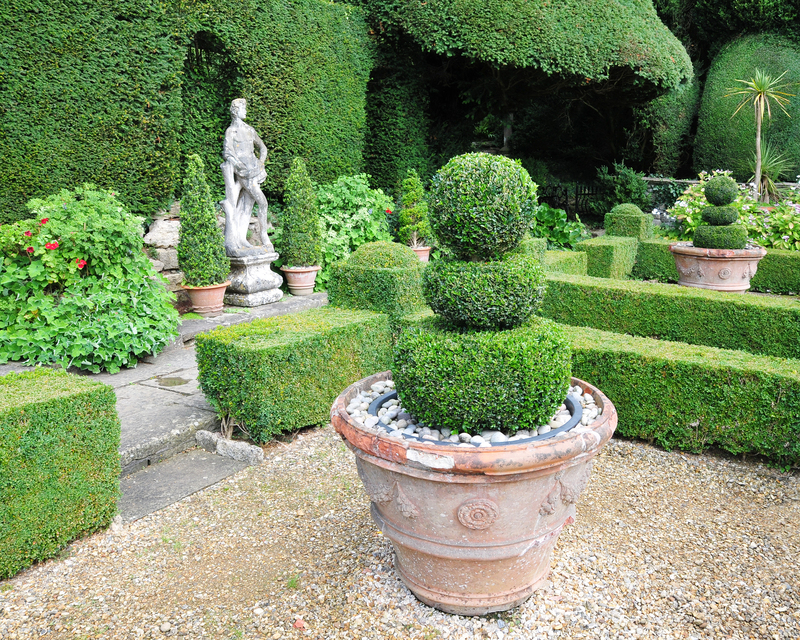Choosing the Best Plants for Low-Light Window Boxes Indoors
Are you struggling to bring life to your indoor spaces because your windows don't get much sunlight? You're not alone! Many homeowners, renters, and office dwellers wish to beautify their homes or workspaces with lush indoor window boxes but worry about the lack of light. Fortunately, there are a variety of plants that thrive in low-light conditions, making it possible to create stunning indoor window gardens even in shaded spots. This comprehensive guide will help you with choosing the best plants for low-light window boxes indoors, offering expert tips, plant suggestions, maintenance advice, and design ideas so your indoor window box can flourish year-round.
Understanding Low-Light Conditions Indoors
Before picking out indoor plants for shady window boxes, it's essential to understand what "low-light" means in the context of interior spaces:
- Low-light areas are those that receive little or no direct sunlight, such as windows facing north, shaded corners, or rooms with frosted glass.
- Indirect light or ambient light--light that bounces off walls or other surfaces--can also support certain plant species.
- Artificial lighting can supplement natural light, but it's not always essential for the hardiest low-light plant choices.
Signs of Sufficient Light for Plants
Many shady indoor window boxes will have enough brightness for selected plants if you can comfortably read a book there during the day without a lamp. If your spot is noticeably dim, pick the lowest-light tolerant varieties, and consider adding a small grow light if needed.

Benefits of Indoor Window Boxes with Low-Light Plants
Why invest in indoor window box gardens with shade-loving plants? Here's what you'll gain:
- Air purification: Many low-light plants help remove toxins from indoor air.
- Boosted mood & productivity: Research shows greenery reduces stress and enhances creativity, making them perfect for bedrooms, living rooms, and offices.
- Year-round beauty: Well-chosen low-light plants keep your window boxes looking lush even in winter.
- Low maintenance: Many low-light plants don't need frequent watering or fussing.
- Perfect for renters: Window boxes can be moved or swapped out easily.
Key Factors When Choosing Plants for Shady Indoor Window Boxes
When selecting the best plants for low-light window boxes indoors, keep these essential factors in mind:
1. Light Tolerance
Not all plants survive in low light. Look for varieties explicitly described as thriving in shaded or low-light settings.
2. Mature Size & Growth Habit
Indoor window boxes have limited space. Choose compact, slow-growing, or trailing plants that won't outgrow the box quickly.
3. Water & Humidity Needs
Select plants with similar moisture requirements to simplify care routines.
4. Visual Appeal
Combine a mix of leaf shapes, sizes, and colors to create visual interest. Opt for plants that look good together year-round.
Top Indoor Plants for Low-Light Window Boxes
Ready to fill your indoor window box with greenery? Below are the best low-light plants known for their resilience and beauty, alongside tips for varieties, display, and care.
1. Snake Plant (Sansevieria)
- Why it's great: Virtually indestructible, snake plants tolerate low light and dry air. Their upright leaves add sculptural drama.
- Care: Water sparingly, allow soil to dry out, and wipe leaves occasionally.
- Varieties: Choose dwarf types for window boxes, like 'Hahnii' or 'Golden Hahnii'.
2. ZZ Plant (Zamioculcas zamiifolia)
- Why it's great: Almost impossible to kill, the ZZ plant sports shiny, dark green leaves and grows well in the dimmest corners.
- Care: Water when dry, avoid soggy soil. ZZ plants tolerate neglect and low humidity well.
3. Pothos (Epipremnum aureum)
- Why it's great: This classic vining plant thrives in low light and offers trailing foliage, ideal for draping over the edges of window boxes.
- Varieties: 'Marble Queen', 'Golden', and 'Neon' are popular types.
- Tip: Prune regularly for denser growth and prevent over-long vines.
4. Peace Lily (Spathiphyllum)
- Why it's great: Peace Lilies flower in low light and help purify air.
- Care: Keep soil moist (but not soggy). If leaves droop, water immediately.
- Advice: Use a small variety if space is tight, like 'Sweet Chico'.
5. Cast Iron Plant (Aspidistra elatior)
- Why it's great: True to its name, the cast iron plant survives neglect, low light, and occasional drought.
- Care: Low watering needs, avoid direct sun which can scorch leaves.
6. Ferns (Assorted Varieties)
- Boston fern, Maidenhair fern, and Bird's Nest fern are particularly adaptable to shady indoor conditions.
- Tip: Maintain humidity and mist occasionally to keep fronds lush.
7. Chinese Evergreen (Aglaonema)
- Why it's great: Beautifully patterned leaves and exceptional tolerance for low light and inconsistent watering.
- Varieties: Choose compact cultivars, which are perfect for window boxes.
8. Philodendron
- Why it's great: With many species and varieties, philodendrons--especially heart-leaf types--thrive in the shade.
- Tip: Let them trail or gently wind around support stakes in the window box.
9. Spider Plant (Chlorophytum comosum)
- Why it's great: Spider plants tolerate low to moderate light and produce eye-catching "babies" that can hang from the box's edge.
- Tip: They're easy to propagate to expand your indoor garden.
10. Dracaena
- Why it's great: Brightly striped or variegated leaves without needing bright sun.
- Care: Avoid overwatering and fluoride-rich tap water.
Creative Design Tips for Low-Light Indoor Window Boxes
When you're ready to plant your indoor window box for shade, consider these style ideas and combinations:
Plant Placement
- Front: Place trailing plants like pothos or heart-leaf philodendron for graceful cascade.
- Middle: Add upright foliage like small snake plants or compact dracaena for structure.
- Back: Use bushier plants (e.g., peace lily or Chinese evergreen) for fullness.
Mix Textures and Colors
- Combine glossy leaves (ZZ plant, philodendron) with delicate ferns for contrast.
- Variegated or colored foliage (dracaena, Chinese evergreen) adds year-round visual interest.
- Aim for at least three different leaf shapes in your arrangement.
Container & Soil Tips
- Ensure your window box has drainage holes or a layer of pebbles to avoid root rot.
- Use a high-quality potting mix formulated for houseplants.
Maintenance & Care for Low-Light Indoor Boxes
- Water only when the top inch of soil is dry. Overwatering is a common cause of plant distress in low-light conditions.
- Rotate the window box every few weeks to even out growth.
- Wipe leaves with a damp cloth to keep dust off and maximize light absorption.
- Feed sparingly--once every 2-3 months--with a gentle liquid fertilizer during spring and summer.
- Occasionally check for pests like spider mites or scale; treat early if found.

Frequently Asked Questions About Low-Light Indoor Window Boxes
Can I grow flowering plants in indoor shade?
Yes! Peace lily is a top choice for white blooms even in low-light. Other candidates (given moderate light) include anthurium or certain begonia types.
Is it possible to use herbs in shady indoor boxes?
Most culinary herbs need bright sun, but you can try mint, parsley, or chives in spots that get a little indirect or dappled light.
What if I have no natural light at all?
Consider supplemental lighting, such as LED grow lights, for the health and growth of your plants.
How can I make my window box look fuller?
Use a mix of upright, trailing, and bushy plant forms. Over time, many shade-loving plants will naturally fill their space.
Conclusion: Your Guide to Lush, Low-Light Window Boxes Indoors
With a thoughtful plant selection, even the dimmest interior windows can host a flourishing indoor garden. By choosing the right houseplants for low-light window boxes, you'll enjoy the beauty, health benefits, and tranquility that only greenery can provide--without worrying about a lack of direct sunlight. Remember:
- Select plants verified for shade tolerance such as snake plant, ZZ plant, ferns, and pothos.
- Mix plant heights, colors, and textures for a stunning indoor display.
- Maintain a simple care routine--avoid overwatering, and occasionally rotate and feed your plants.
- Consider adding a modern LED grow light for spaces with no natural light.
Experiment with combinations, rotate your selections with each season, and soon your indoor window box will become a highlight of your home or office.
Start planting today, and discover how easy and rewarding a lush, low-light indoor window box can be!